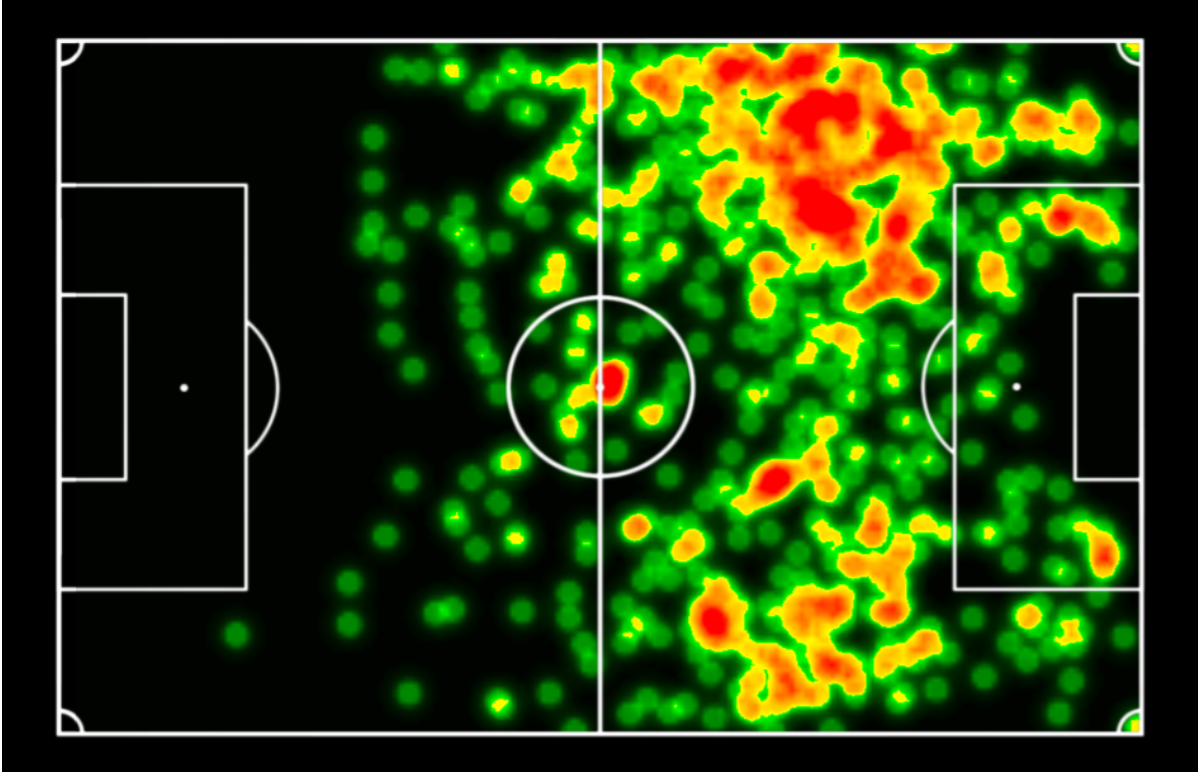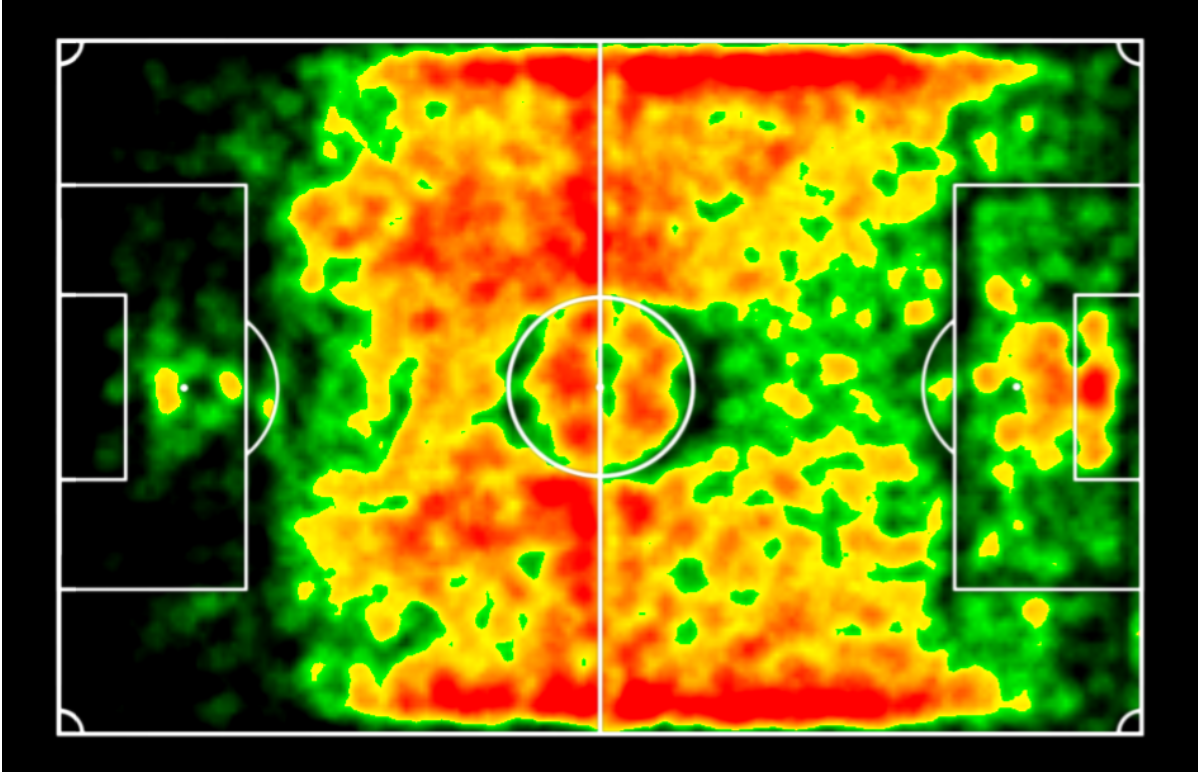For the first time in almost a decade, Real Madrid will be starting a La Liga season without Cristiano Ronaldo.
Operating as a forward, Ronaldo had more than double the number of shots (140) of any other Real player in La Liga last season. His influence was even more pronounced in the Champions League, where he scored 15 of Real’s 33 goals.
In this blog, we are going to take a closer look at how Ronaldo has been at the core of Real’s system during recent seasons, as well as looking into how Real may adapt to life without him.
How Ronaldo’s role changed in 2017/18
Having played mainly on the left in either a 4-3-3 or 4-2-3-1 formation in previous campaigns, Ronaldo was utilised more centrally last season. Real adopted a variety of different formations, but in most instances played 4-3-1-2 or 4-4-2, with Ronaldo being one of two forwards.
The change in formation meant that he had more shots and touches in the attacking penalty area compared to the previous two seasons.
Cristiano Ronaldo: 2017/18 La Liga goal attempts in the penalty area (per 90)
| Season | Touches | Shots (Exc. Blocks) | Goals Scored | xG | xG/shot |
| 2017/18 | 10.11 | 4.39 | 1.02 | 0.94 | 0.17 |
| 2016/17 | 7.54 | 3.36 | 0.78 | 0.83 | 0.21 |
| 2015/16 | 8.17 | 3.65 | 0.85 | 0.85 | 0.21 |
Another noticeable difference in his game last season was a reduction in the number of shots outside of the box and an increase of goal attempts with his head. Crosses from wide positions has been a staple of Real’s play in recent seasons – they averaged 23.79 crosses per 90 in 2017/18 (the second highest in La Liga behind Eibar) and have ranked in the top four in La Liga for the past five seasons.
Cristiano Ronaldo: 2017/18 La Liga goal attempts per 90
| Season | % Shots inside box | % Shots outside box | % Head | % Left foot shots | % Right foot shots |
| 2017/18 | 79.2% | 20.8% | 19.7% | 24.7% | 55.1% |
| 2016/17 | 69.8% | 30.2% | 16.7% | 21.6% | 61.1% |
| 2015/16 | 63% | 37% | 15.9% | 26% | 58.1% |
A more patient approach in possession
As well as changing their system, Real also adapted their approach in possession last season, which placed greater emphasis on retaining the ball and not getting it forward as quickly as in previous seasons.
On average, Real attempted 593.8 passes per 90 last season, which was an increase of more than 60 compared to 16/17. Using the Opta sequence framework, we can see that they were averaging more passes per sequence and each sequence lasted longer.
Real Madrid La Liga sequences

During 2017/18, Real Madrid’s dominant passing combination in league games was between Marcelo and Toni Kroos, who passed to each other 648 times. Sergio Ramos played the ball out 263 times into Kroos and 256 times into Marcelo, so it is clear that when building from the back, the Ramos/Kroos/Marcelo combination was key to Real’s play.
When it comes to Ronaldo, he received most of his passes from Marcelo (150), followed by Kroos (147). Looking at the heat map for the location of passes played into him, we can see that he was being fed mainly from the left hand side. Only 22.7% of Ronaldo’s passes went forward, which shows how he was used to link-up play – most of his passes also went back to Kroos (95) or Marcelo (83).
Origin of passes played to Cristiano Ronaldo: La Liga 2017/18

A return to 4-3-3 this season?
In the 11 league matches which Ronaldo didn’t feature in last season, Real played two up front on only three occasions – reverting back to 4-3-3 or 4-2-3-1 in the other matches.
In addition to Ronaldo’s departure, Real have also changed their coach following the resignation of Zinedine Zidane.
His replacement, Julen Lopetegui, has limited coaching experience at club level, with just an 18 month spell in charge of FC Porto from between 2014 and 2016 during the last 10 years.
During his time with Porto and in World Cup qualification with Spain, he tended to prefer setting his team up in a 4-3-3 formation. During pre-season with Real, he has utilised a mix of 4-3-3 and 4-2-3-1, with Benzema operating in a central position.
His Porto side liked to play a possession-based game, averaging over 565 attempted passes per 90, with passes played into wide areas on both flanks, as highlighted by the heat map below.
End location of FC Porto passes: Primeira Liga 2014/15
 The full-backs at Lopetegui’s Porto, which included Danilo, Miguel Layún and Maxi Pereira, predominantly looked to link-up with their wingers on each flank. In 2014/15, Porto were also delivering 26.32 crosses per 90, targeting Jackson Martinez centrally. Over 22% of Martinez’s goal attempts at Porto were headers.
The full-backs at Lopetegui’s Porto, which included Danilo, Miguel Layún and Maxi Pereira, predominantly looked to link-up with their wingers on each flank. In 2014/15, Porto were also delivering 26.32 crosses per 90, targeting Jackson Martinez centrally. Over 22% of Martinez’s goal attempts at Porto were headers.
Spain under Lopetegui also dominated possession during World Cup qualification, however given the difference in strength between them and some of their opposition it is difficult to attain meaningful insights from that campaign.
Who will replace Ronaldo?
In terms of outfield players, Real’s biggest acquisitions to date have been on players operating in wide positions: 18-year old Brazilian winger Vinícius Jr from Flamengo, and Real Sociedad full-back Álvaro Odriozola.
Vinícius is a right-footed winger who played on the left for Flamengo in Serie A this season. Of players with more than 900 on-field minutes in 2018, he sits 4th in the league for take-ons per 90 (6.75), with a success rate of 42.5%. In front of goal, he likes to create an angle to shoot from the corner of the box with his preferred foot, as illustrated by his shot map below.
Vinícius Jr shot map: Serie A 2018

Odriozola is an attack-minded full back who averaged 4.75 crosses per 90 in La Liga last season, the second highest of any right back in La Liga in 17/18. He averaged 25.52 touches in the attacking third, only slightly less than Daniel Carvajal (27.53).
Real haven’t brought in a centre forward and given his involvement in pre-season, you would expect Benzema to start the season as a sole centre forward in a 4-3-3 or 4-2-3-1, supported by Gareth Bale on the right, who started all three games in the International Champions Cup, and one of either Marco Asensio or Vinícius on the left.
If they set up this way, there will be a lot of expectation on Benzema to improve on his goal output from last season, where he scored just five times in 32 appearances, although he did contribute 10 assists. Benzema’s xG total of 13.22 suggests that he got into shooting positions that would normally generate a higher number of goals, and Real will be hoping that he can continue to find himself in these positions, albeit with a different outcome this time round.
Given Real’s high-volume crossing approach, it may be a concern that Benzema only won 23% of his aerial duels in 2017/18, compared to Ronaldo’s 54%.
In contrast to Benzema, Bale outperformed on his xG last season (11.82), scoring 16. He also had 65 shots from 26 appearances, which was second to Ronaldo, despite only playing the full 90 on 10 occasions. Bale also had a similar aerial success rate to Ronaldo last year – winning 52.4% from the same number of duels, so if Benzema’s aerial struggles continue, Lopetegui may be tempted to play Bale more centrally.
If the Welshman does plays the full 90 more regularly and can maintain a similar output to last season, 2018/19 could be the season where he flourishes in Madrid, building on his match-winning display in last season’s Champions League final.